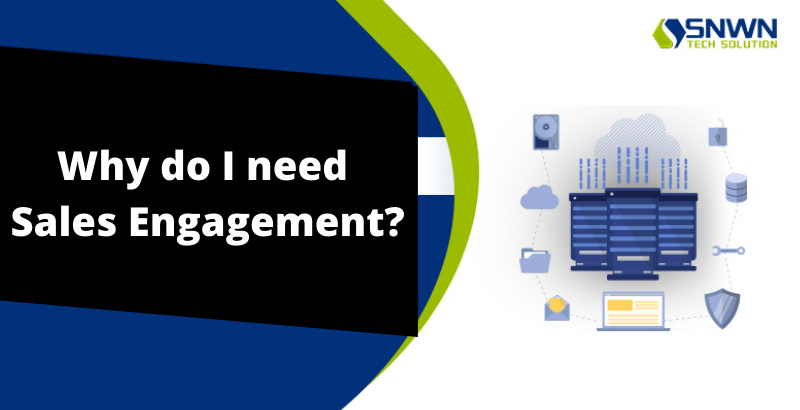As a sales professional, you must agree that when prospects show interest in your services and/or products, they will always expect a fast and personal reply.
A study shows that most of the consumers consider this as one of the most important elements in any sales interaction.
However, in today’s sales environment, very few in-person opportunities arise for engaging with your prospects.
For this very reason, faster, more practical, and above all, personalized outreach programs have become very necessary in order to build up your sales pipeline and to establish a trusted relationship with your prospects.
But it is much easier said than done as engaging with your leads after following-up is very much time-consuming, not to mention the tediousness. This has led to the development of sales engagement through automation tools and software.
In this article, we will learn what exactly sales engagement means, why would your business needs sales engagement, and how you can benefit from adopting some of the best sales engagement practices?
What is Sales Engagement?
The term Sales Engagement can be defined as a collection of interactions and/or exchanges conducted between a sales rep and the target audience (prospects).
It is a measurable quantity and is done so by ‘contact-points’ (aka touches) or the time spent by both parties on each interaction.
Any action taken by the prospect, be it opening an email, clicking on a link, or even downloading an ebook or video, is considered as a form of Sales Engagement.
The rate at which the prospects complete these actions tell the sales rep how engaged each prospect is.
This is a very effective technique as it helps the sales reps to understand the requirements of the prospects more clearly and come up with the best support strategy.
There are many software and tools in the market that can help with Sales Engagement.
Why do I need Sales Engagement?

In order to understand this, we will need to look at some of the “pain-points” of sales and how do they affect the overall sales of your rep.
A quick survey would tell you that at least one of these seven “pain-points” is a worrisome issue for any Sales Manager.
Manual, time-consuming repetitive tasks are a sales rep’s worst nightmare
Even though the main responsibility of a sales rep is to close a deal as smoothly and efficiently as possible, an array of related tasks are always associated with a sales reps job description.
Sending emails, following-up with prospects and making other calls, keeping the CRM updated, etc. are to name a few.
These manual, tedious, and repetitive tasks, by no means, contribute towards closing a deal. Rather these tasks are very time-consuming and eat up most of the work hours of every sales rep.
These tasks easily de-track a sales rep from selling. This situation has led to the automation of these tedious tasks. By automating these tasks, the sales reps can gain a bulk of time that was earlier being consumed by the manual operation.
In turn, the sales reps can focus more on selling rather than on admin tasks.
The necessity of personalizing at scale
Balancing the scale of one’s outreach programs with personalization is another very common challenge faced by sales teams globally.
Keep in mind that your customers or buyers will always expect and prefer personalization in your outreach programs. This goes to show that as a sales rep you know about their interests and who they are.
This approach is really effective as it impressively increases your chances of hearing back from them.
On the other hand, as a seller, you will need to scale your outreach programs so that you can attract a larger target audience, and hence, increase your prospect list.
This creates an instant tug of war that you cannot satisfyingly conclude. And this confuses your sales reps in choosing between whether to reach out to a larger bulk of potential customers with a lower level of personalization or to personalize every outreach initiative for each client?
This scenario has made it necessary for a platform that can aid in this dilemma and the answer to that was found in the form of sales engagement software that helps the reps to balance out their sales strategies.
ALSO READ : A Guide To An Ideal System Administrator’s Role And Ethics In The Concurrent World
Excess of sales tools have led to data clogging
Your sales reps may end up being overwhelmed rather than being overjoyed with the availability of a string of specialized sales tools available these days.
In today’s business world, most of the sales institutions have already engaged in multiple tools to support their sales reps and selling activities, hence improving their productivity.
These tools do not work by complementing each other, rather they operate independently. This ends up creating major issues for the sales teams as they end up toggling in between these tools.
As a result, a lot of data gets stuck in different storage locations or “silos” and hinders the sales reps from getting a clear picture at a singular location.
Instead, investing in a software or platform that can integrate the various tools is a much more effective support mechanism.
These are but a few of the challenges faced by sales organizations. Missing out on crucial business decision-driving data is another such serious issue that can be addressed and simplified with a Sales Engagement software in place.
Also, your CRM is not enough to efficiently handle customer engagement alone.
Benefits of Sales Engagement Software

Personalized engagement with prospects
With such technology, you can simultaneously scale up your outreach programs and activities as well as improve the genuineness of each customer engagement with a higher level of personalization in each case.
With a Sales Engagement platform, you can easily set up an automated yet intelligent follow-up activity sequence(s), which, in turn, gives you better productivity and engagement.
Integrated platform
Data, existing in the different “silos” in an organization, are connected to each other cohesively into a single location with the help of this awesome technology we are discussing today.
This means that your CRM system is also integrated into this platform. This makes it much easier for you to select the best sales and marketing materials available to form up a grand strategy for executing your tasks smoothly and enhancing your productivity.
Sales reps are always privy to all their engagement needs like customer insight, communication execution, etc. in a single solution.
A stronger CRM system
As we said earlier that Sales Engagement software integrates CRM systems as well.
This means your existing CRM system will not be lost, rather amplified to a more effective aid to you. The CRM acts as a central repository while the Sales Engagement platform will act as a layer of communication that helps your reps to boost their productivity the smart way.
ALSO READ : 10 Mistakes Sales Representatives Makes Way Too Often And The Solutions To Avoid Them
It helps them conduct smart-work rather than hard-work.
So, now that you know how valuable this software has become in the current sales scenario, get started with your own!
